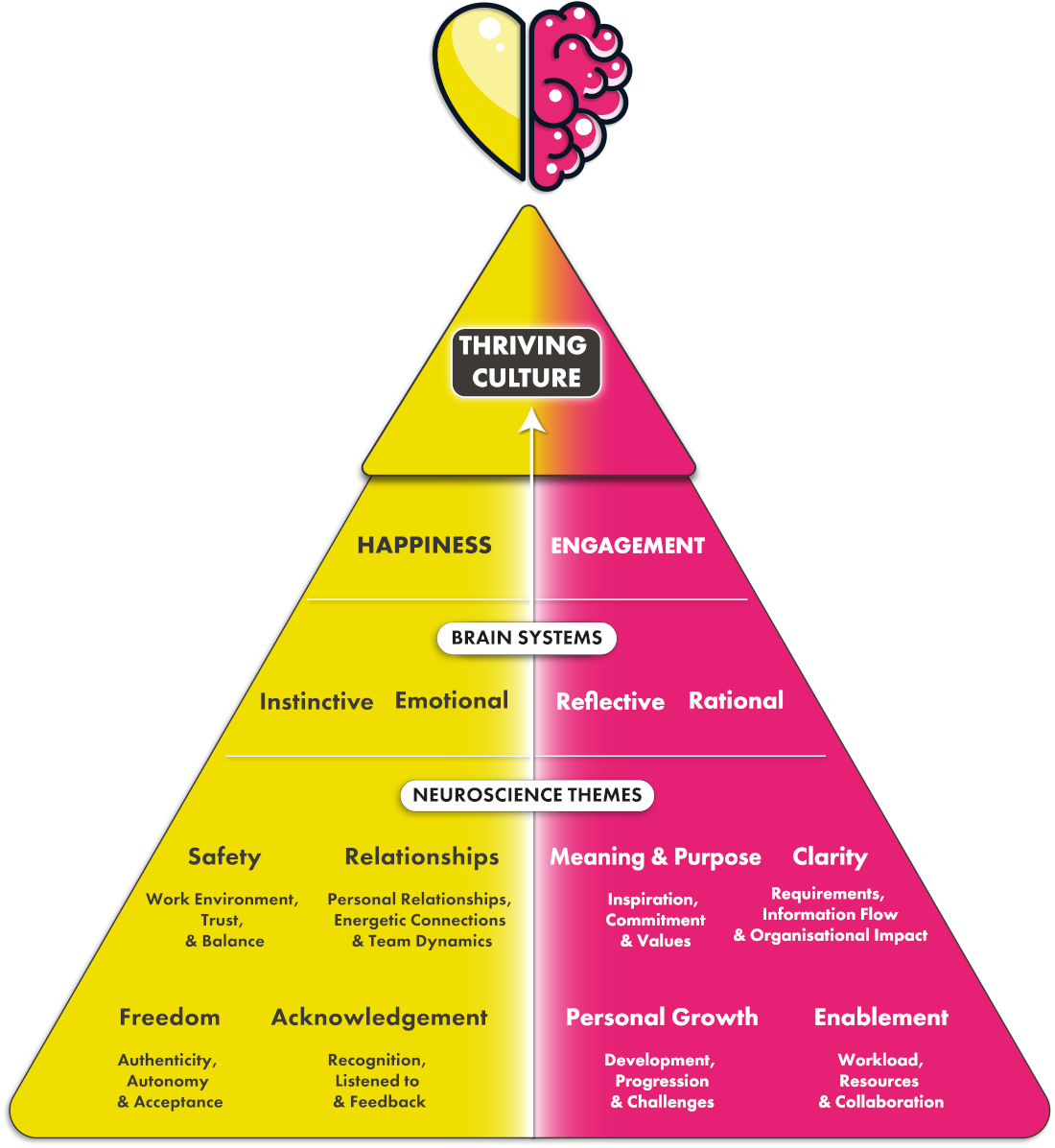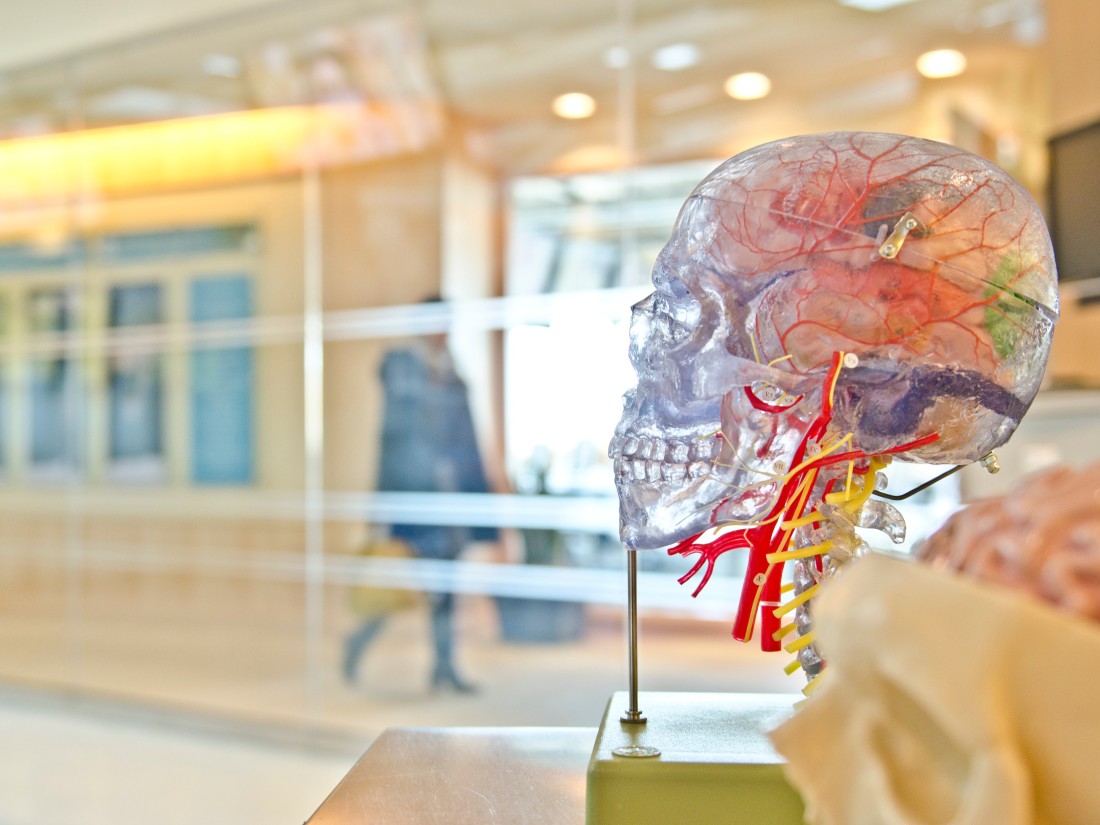
Creating an Employee Engagement AND Happiness Strategy
If you’ve been engaging with our content for a while, you probably know that we bang on about neuroscience a lot. In fact, we use it to underpin every decision we make on our platform and in our company. We don’t just love neuroscience, we live it.
In this post we’re going to talk about the four brain systems.
Instinctive
Emotional
Reflective
Rational
Although we often call these brain systems, they actually refer to different ways of reacting and engaging with our work and environment.

Each of the brain systems is also linked to two neuroscience themes.
Pretty much as it sounds, our instinctive brain is the part that responds to our environment innately.
Our instinctive brain relies on one of the oldest brain structures, called the Basal region. This area of the brain is often the quickest to react.
It’s associated with the following kinds of behaviours and ways of thinking.
Knowing, Hunch, Conviction, Certainty, Arrogance, Speed, No Fuss, Decisive, Territorial, Gut Feel.
Within our platform, we ask questions around Safety and Freedom to help support the overall Instinctive brain system score.
Our emotional brain is the part of the brain that responds to other people. In the world of work, it’s often related to relationships both with each other and how you feel about yourself.
Our emotional brain relies on the limbic system, which is also used for the survival responses showing how vital it is to our lives.
It’s associated with the following kinds of behaviours and ways of thinking
Feelings, Sensory, Volatile, Expressive, Empathic, Creative, Subjective, Body and Heart.
Within our platform, we ask questions around Acknowledgement and Relationships to help support the overall Emotional brain system score.
When it comes to our ability to mentally “step back” and dispassionately consider our own response, this is the reflective part of the brain talking.
When we’re engaging our reflective brain system, we’re using our prefrontal cortex. It’s associated with the more complex tasks we use our brains for, like planning, but it’s also linked to personality.
This brain system is associated with the following kinds of behaviours and ways of thinking.
Intuitive, Self- aware, Big Picture, Patterns, Observational, Insightful, Visionary, Indulgent.
Within our platform, we ask questions around Meaning & Purpose to help support the overall Reflective brain system score.
Our rational brain system springs into action whenever we need to slow down and consider our options.
This brain system is associated with our cerebral cortex. This is the part of the brain that is linked to what is called “high-order brain functions” including memory, association and perception.
This brain system is associated with the following kinds of behaviours and ways of thinking.
Thinking, Rational, Structures, Logical, Evidence, Rules, Method, Organised, Objective, Process, Systems, Data, Cerebral.
Within our platform we ask questions around Clarity and Enablement to help support the overall Rational brain system score.
You will use all of these brain systems every single day, sometimes at the same time. But many people have one brain system that they tend to rely on more often or have a preference for. Some people naturally tend towards a reflective brain system for example, while others prefer the logical evidence and rules of the rational brain.
You might feel like you know which brain system your team tends towards. Knowing this can help you to design and implement a people strategy which is appealing to them.
However, it’s important to remember that you need to appeal to all of the brain systems. This is because everyone uses all of them. In order to have a successful people strategy and thriving culture, you need to balance all of the brain systems.

Linked to Happiness & Engagement in our neuroscience methodology... learn more
The Happiness Index helps organisations measure the key employee engagement AND happiness drivers to power their people strategy.
Our unique platform offers the products, insights and tools to shine a light on your cultural health and empower management to drive thriving cultures.
Our neuroscience-based pre-built surveys measure the full employee experience - from onboarding to exit to empower and enable organisations to understand their people and create data-led action plans.
